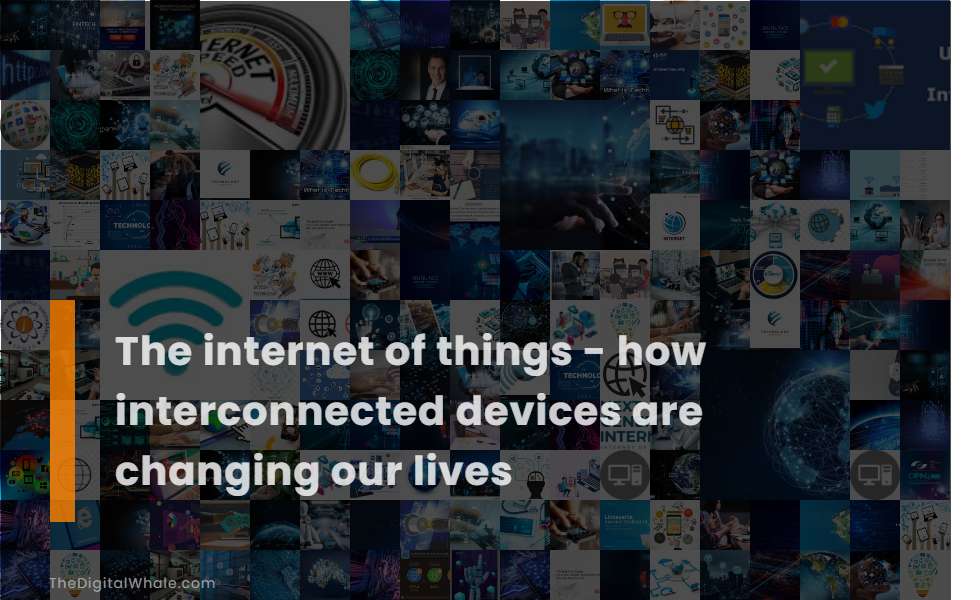The Internet of Things - How Interconnected Devices Are Changing Our Lives
What are the benefits of integrating IoT into business? What are the benefits of the Internet of Things? Let's find out more about The Internet of Things - How Interconnected Devices Are Changing Our Lives.

Connectivity: Establishment of connections between various devices for seamless communication.
IoT Devices establish connections through various protocols and technologies, including CoAP, MQTT, AMQP, and wireless protocols like Zigbee, Bluetooth Low Energy, Z-Wave, Wi-Fi, and cellular networks, each offering different tradeoffs in terms of power consumption, range, and bandwidth to facilitate seamless communication and data exchange. For more detailed information on what constitutes an IoT device, you can explore the definition provided by TechTarget. These devices are pivotal in the IoT ecosystem, ensuring efficient and effective connectivity across diverse environments.
Artificial Intelligence: Devices and systems use AI and machine learning to draw insights and make real-time decisions.
The integration of Artificial Intelligence (AI) and the Internet of Things (IoT) enables devices to learn and adapt over time, allowing them to operate more intelligently. AI analyzes data collected by IoT sensors to extract valuable insights, make predictions, and automate decisions, enhancing automation, predictive maintenance, and user experiences across various industries such as smart homes, healthcare, and industrial automation. For more insights on how these technologies collaborate, visit the AI and IoT Relationship page for detailed information.
Security: Dynamic cybersecurity to handle the complexity of new and legacy solutions.
Securing IoT devices is crucial due to their widespread integration into daily life, as each device represents a potential entry point for cybercriminals. Effective cybersecurity measures must evolve with technological advancements, incorporating technologies like machine learning, AI, and blockchain to secure devices, networks, and data, especially given the challenges posed by legacy devices and the complex, decentralized nature of IoT ecosystems. For more insights, visit the Security Scorecard Blog to explore the importance of cybersecurity strategies in safeguarding our interconnected world.
Scalability: Ability to expand and adapt to growing numbers of devices and data.
IoT scalability involves the ability of a connected system to expand and adapt to growing numbers of devices and data, which is significantly enhanced by Cloud Computing through its flexibility in scaling servers, managing data storage, and ensuring secure connectivity. This advancement allows businesses to upgrade or downgrade resources in response to changing demands. To learn more about how cloud technology is revolutionizing the Internet of Things, explore the insights available on IoT For All.
Integration: Effortless integration within and across networks of devices using multiple connectivity standards.
IoT integration involves connecting and enabling various IoT devices to work together seamlessly, often using software and sometimes hardware to act as a translator between devices from different manufacturers. This integration allows devices to communicate in a unified language, enabling automated routines and ensuring efficient data exchange, security, and updates. For further insights, you can explore the concepts and applications of IoT Integration in detail on the Bytebeam website.
Related:
What is the future of virtual reality? What are some social implications of virtual reality? Let's find out more about Virtual Reality - Is This the Future?.
Smart Home Automation: Control of home devices such as lights, thermostats, and appliances via mobile devices.
Smart home automation enables the remote monitoring and control of home devices such as lights, thermostats, and appliances through internet-connected devices, often managed via a central smart home hub and controlled using smartphones, tablets, or voice assistants like Amazon Alexa or Google Assistant. For more insights, you can explore the definition of Smart Home or Building which delves into the technologies that make modern home management more streamlined and efficient.
Health and Fitness Monitoring: Use of wearable devices and health-monitoring systems to track personal health.
The Internet of Things (IoT) is revolutionizing health and fitness through wearable devices and health-monitoring systems. This technology enables personalized workouts, real-time monitoring of vital signs, and early detection of health issues, thereby enhancing user engagement and preventive healthcare. For an in-depth exploration of its impact, you can read more about IoT reshaping fitness and health on the Hashstudioz Blog, which covers the latest advancements and applications of this transformative technology.
Enhanced Efficiency and Productivity: Improvement in industrial processes, supply chains, and daily routines through real-time data.
The Internet of Things (IoT) enhances efficiency and productivity by providing real-time data, enabling quick identification of issues, optimizing resource allocation, and improving process efficiency in industrial processes and supply chains. As highlighted on Link Labs, IoT improves supply chain management by reducing waste, optimizing energy consumption, and facilitating real-time data sharing and communication among partners. This leads to synchronized planning, faster decision-making, and improved coordination, as well as automating repetitive tasks like inventory management and asset tracking, streamlining workflows overall.
Public Safety and Transportation: Impact on public safety and transportation through connected devices and real-time data.
The integration of IoT in public transportation plays a crucial role in enhancing public safety. This technology monitors driving behaviors and provides real-time alerts for speed limit violations and other safety concerns, helping to reduce the risk of accidents and improve the overall travel experience. Additionally, real-time data streaming from IoT devices monitors vehicle conditions and passenger behavior, enabling swift responses to incidents and enhancing passenger satisfaction with up-to-the-minute updates and efficient service delivery. You can read more about this topic on the HyScaler website. By optimizing operational efficiency, IoT significantly contributes to building safer and more reliable public transit systems.
Hyperpersonalization: Devices and networks tailored to provide personalized experiences and services.
The Internet of Things (IoT) enables hyperpersonalization by connecting physical objects with sensors and actuators, using AI and machine learning to draw insights from data and make real-time decisions. This technology provides personalized experiences across various platforms and scenarios. For more in-depth information, you can explore the detailed insights on the McKinsey & Company website.
Related:
What are the pros and cons of drones in the film industry? What are the implications of commercial drone use for the economy? Let's find out more about Drones - What Are Their Implications?.
